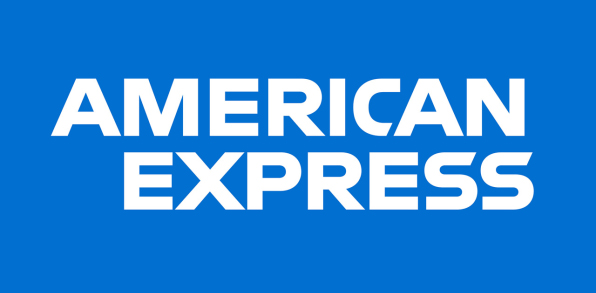Outlook is a long-standing software application with a user-friendly design, sophisticated search capabilities, filtering functionalities, and seamless compatibility with other Microsoft programs.
Meanwhile, Gmail’s UI is easy for users, offers many personalization choices, and has very effective spam filtering. In addition, it seamlessly integrates with other Google services such as Google Drive, Calendar, and Meet.
Whether you’re a business professional, a student, or someone who wants an efficient email automation experience, choosing between these two best email providers, Outlook and Gmail, can be daunting. In this comprehensive comparison, we’ll explore Outlook and Gmail’s features, functionalities, and user experiences to help you make an informed decision.
The Comparison: Outlook vs. Gmail
User Interface and Design
Outlook’s user interface boasts a clean, professional design with a familiar layout that aligns with other Microsoft Office applications. The navigation pane on the left provides easy access to mail, calendar, contacts, and tasks, while the customizable ribbon toolbar offers quick access to commonly used features. The design intergace prioritizes functionality and productivity, making it an ideal choice for business users.
Conversely, Gmail sports a sleek and minimalist design that emphasizes simplicity and ease of use. The tabbed inbox organizes emails into primary, social, and promotional categories, helping users prioritize their messages. The sidebar offers quick access to other Google services like Calendar, Drive, and Meet, seamlessly integrating email with other productivity tools. Gmail’s design is intuitive and user-friendly, catering to casual and power users alike.
Winner: It’s a tie! Outlook and Gmail offer intuitive user interfaces to enhance productivity and streamline email management.
Features and Functionality
Outlook is packed with features geared towards productivity and collaboration. From advanced email filtering and categorization options to seamless integration with Microsoft Office applications like Word, Excel, and Teams, Outlook offers a robust suite of tools for managing emails, calendars, contacts, and tasks. Outlook’s powerful search functionality and email organization capabilities make it easy to stay organized and find relevant information quickly.
Gmail may appear minimalist on the surface, but it packs a punch when it comes to features and functionality. With features like Priority Inbox, Smart Compose, and Smart Reply, Gmail leverages artificial intelligence to help users manage their emails more efficiently. Moreover, Gmail’s integration with Google Workspace (formerly G Suite) provides access to a range of productivity tools, including Google Drive, Google Calendar, and Google Meet, making it a comprehensive solution for email and collaboration.
It’s a close call, but Gmail edges slightly ahead with its AI-powered features and seamless integration with Google Workspace.
Storage and Attachment Limits
Outlook offers generous storage limits for both free and premium users. Free Outlook.com accounts come with 15 GB of storage, while Microsoft 365 subscribers enjoy 50 GB of mailbox storage per user. Outlook also allows users to send email attachments up to 150 MB, making it suitable for sharing large files with colleagues or clients.
Gmail offers an impressive 15 GB of storage for free accounts, shared across Gmail, Google Drive, and Google Photos. Google Workspace subscribers can enjoy additional storage options depending on their subscription plan. Regarding email attachments, Gmail allows users to send files up to 25 MB in size directly through email. Users can use Google Drive integration to share files via links for larger files.
Outlook wins regarding attachment size limit, but Gmail offers more generous storage options for free accounts.
Security and Privacy
Outlook prioritizes security and privacy, leveraging Microsoft’s robust infrastructure and advanced security features to protect user data. With multi-factor authentication, encryption, and advanced threat protection, Outlook offers comprehensive safeguards against cyber threats and unauthorized access. Additionally, Outlook adheres to strict privacy policies and compliance standards to ensure user data remains secure and confidential.
Similarly, Gmail strongly emphasizes security and privacy, utilizing Google’s cutting-edge technologies and infrastructure to safeguard user data. Gmail incorporates two-factor authentication, phishing protection, and machine learning-based spam filtering to secure user accounts. Google also gives users granular control over their privacy settings and data-sharing preferences, empowering them to manage their privacy effectively.
Outlook and Gmail prioritize security and privacy, offering robust safeguards and advanced features to protect user data.
Integration and Compatibility
Outlook seamlessly integrates with other Microsoft products and services, making it an ideal choice for users who rely on the Microsoft ecosystem. From Office applications like Word, Excel, and PowerPoint to collaboration tools like Teams and OneDrive, it offers deep integration with a wide range of productivity tools. Additionally, it supports synchronization with third-party applications and services through APIs and plugins, enhancing its compatibility and flexibility.
Gmail integrates seamlessly with Google’s ecosystem of products and services, offering tight integration with Google Drive, Google Calendar, and Google Meet. With Google Workspace, users can collaborate in real time on documents, spreadsheets, and presentations directly from within Gmail. Moreover, Gmail supports integration with third-party applications and services through APIs and add-ons, allowing users to customize their email experience according to their needs.
Outlook and Gmail offer extensive integration options and compatibility with various productivity tools and services.
Which should you choose?
These two email providers both provide distinct benefits based on your or your organization’s individual requirements and preferences. Gmail excels in its straightforwardness, advanced search functionalities, and easy interaction with Google’s interconnected system.
On the other hand, Outlook provides an extensive collection of productivity tools, sophisticated email organization capabilities, and robust security features, all of which are particularly attractive to enterprises. Whether one prefers Gmail’s sleek, intuitive interface or Outlook’s more comprehensive, integrated setting, both email platforms provide resilient resolutions for professional and personal communications.
You can get Outlook 2021 and try its excellent features at Softvire Global Market, where we have great deals!
Final Thoughts
In the battle of Outlook vs. Gmail, both email service providers offer robust features, intuitive interfaces, and strong security measures to meet users’ needs. Choosing between Outlook and Gmail ultimately depends on personal preferences, workflow requirements, and existing software ecosystems. Whether you’re a business professional looking for a comprehensive productivity suite or a casual user seeking a user-friendly email experience, both Outlook and Gmail have something to offer. So, weigh your options carefully and choose the email service provider that best fits your needs and preferences.


